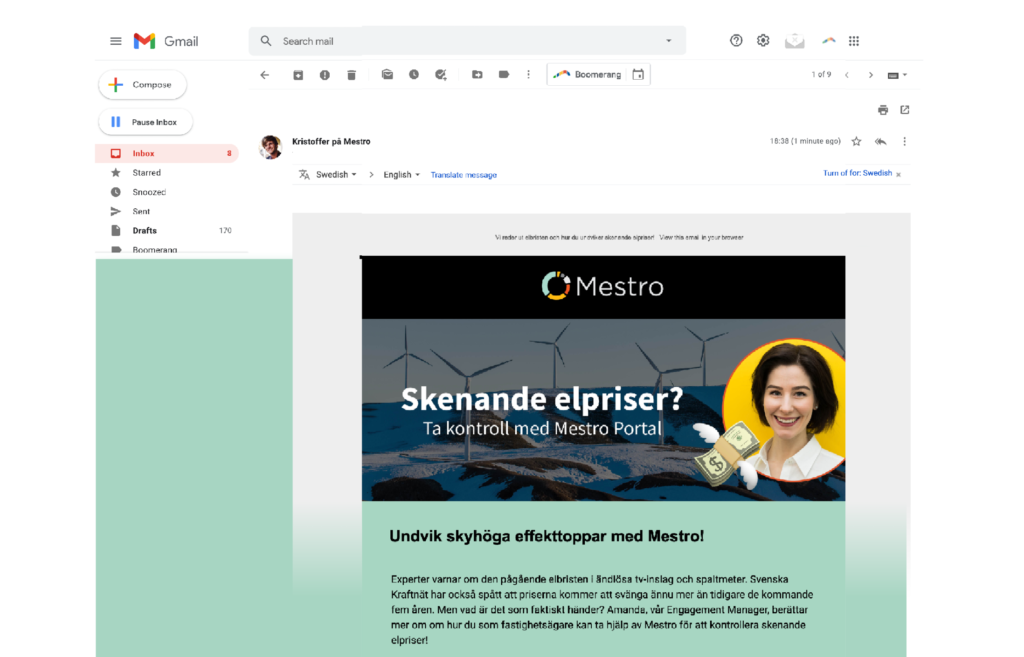A changed energy landscape
As a culture, we have set our sights on a more sustainable tomorrow and part of this project is a more efficient energy landscape. In such a landscape lives not only a healthier planet but lower costs. That’s why there is a strong desire to make buildings, a large chunk of the overall energy use, more efficient. Investments in existing buildings have been made as long as there have been buildings, but the times we are in have meant that the pace of these investments has increased.
A plethora of legal requirements and directives shape the current energy discourse, what is to be installed and reported and when this must be done. These external expectations have meant that there is often a deadline, a date by which the energy investment must be in place. Out of this time pressure comes the need for external advisors, consultants who can actively guide the work.
Energy advisors and consultants come in a variety of forms. In some cases, Swedish municipalities can provide energy and climate advisors to guide property owners to possible and appropriate measures. Such work should result in the property owner being able to verify that the measures are likely to reduce energy use. However, a majority of the country’s energy consultants are private players with expertise drawn from a variety of fields. Experts in ventilation, heat flow and window technology are brought together under one roof in large companies to help property owners identify and ultimately address a building’s weaknesses.
The right action at the right time
Which measures should be implemented and in which order? This may sound like a relatively easy question to answer, but the fact is that these questions are often characterized by great uncertainty. There are measures that will always be good – good in the sense that they will improve the efficiency of the individual property. Instead, the question that modern consultation has come to ask is whether it is the best action at the moment. Specific measures often tend to influence each other, so the order of the measures will determine the rate at which the individual property moves towards a sustainable state.
Modern windows will be better from an energy perspective but it is not always certain that a replacement should be placed at the top of the agenda. This agenda should be built on insights from all aspects of the property and in the past this overview has not always been easy to find. In other words, modern energy efficiency is multivariable. At best, it should take into account an almost infinite number of parameters and arrive at the ultimate combination of measures. Therefore, AI has come to play a more important role in this domain.
An analytical tool from the future
Often there is the substrate (i.e. the data) that an AI model needs to start analyzing a building’s condition. The difference between this process and a more regular analysis is that the AI model generates a model of the property, a digital twin, and then tests a variety of combinations of measures to make a prediction about which measures in which combination will have the greatest impact. On the other side live insights based not only on past experience but future projections.
Given the often external requirements, this type of advice is becoming increasingly important as it offers the customer a flow chart of actions, a hierarchy shaped by the most urgent need. Some companies have found their place in this borderland of needs, the place where both effect and time must be optimized. One of these is nolla_E, a company that shaped its entire business around the idea that energy advice only has value if it results in effective action. They use a sophisticated AI model that goes through up to 30,000 different combinations of measures and presents the results, not just in numbers, but in an action plan tailored to the client’s budget and timeframe.
Ignoring for a second the overall release of working hours, the AI model can thus solve a number of rubiks cubes at the same time. At each stage, building technology aspects, external factors such as climate and the client’s time and cost options are simultaneously addressed. The AI is not decoupled from the professional on site, but the energy analysis with this tool has a whole new caliber – an effect optimized for the current energy paradigm.
Framtidens konsult
The future is likely to be characterized by a three-pronged energy advisory service, a trident of modern technology solutions, the physical energy advisor in the building and a powerful AI with the ability to process almost unlimited data points. This means that in less than a generation, both the energy advice and the measures born out of its analysis have made enormous strides. In other words, a building has gone from being considered a static object where a window replacement was caused by cracks in the glass to a complex network with room for both active and preventive measures.
When it comes to energy efficiency, our level of ambition must remain high. This is largely a matter of ensuring that the incentive structure is correct, both from an economic and sustainable perspective. Because when the consultant closes the portfolio and the property owner turns off the lights in the meeting room, it’s good to remember that everyone basically has the same goal.
Sustainable energy use. This means lower costs for both your wallet and the climate.



